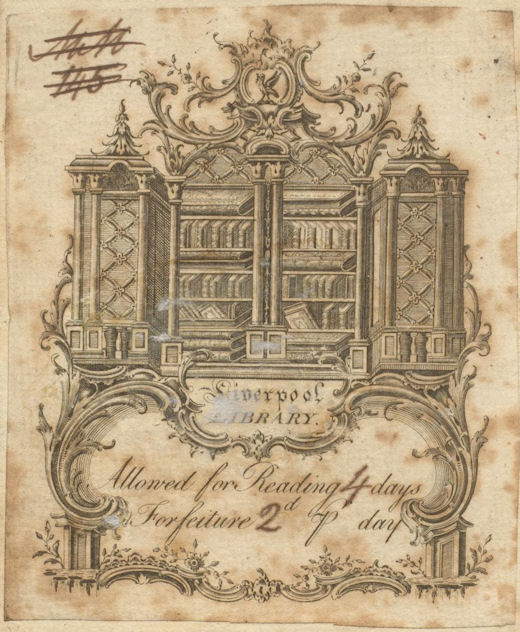Featured at #3 in Rough Guides’ Top 10 Cities to visit in 2014, Liverpool is being hailed for its “full-blown cultural renaissance”. From the 18th century onwards, libraries have been part of that culture, as shown in a new display in Special Collections & Archives.
Designed to accompany the Liverpool colloquium on ‘Libraries in the Atlantic World’ on January 24-25 – the launch event for a new international research network on community libraries – it showcases some of the books in SC&A’s collections which provide physical evidence of historic libraries around the city, selected by Dr Mark Towsey, from the University of Liverpool’s School of History.
A map of Liverpool shows the libraries’ locations, whether they have long since disappeared, or still form part of Liverpool’s rich architectural heritage. Liverpool firsts include the Liverpool Library, founded in 1758 and one of the first subscription libraries. It moved to the Lyceum building at 1, Bold Street (built 1800-02) which can be seen in the fore-edge painting (c.1813) by William Ball on a copy of the 1801 catalogue.
Nearly one hundred years later, in 1850, the Liverpool Free Public Library was established, followed in 1852 by one of the first major libraries to open under the Public Libraries Act (on Duke St) and in 1860 by the first purpose-built public library. This is Liverpool Central Library, recently splendidly refurbished in its original building on William Brown Street, which was renamed for the Library’s benefactor.
We could not resist extending the Libraries in the Atlantic World theme into the 20th century, to show photographs of libraries actually on the Atlantic, onboard the Cunard Line ships documented in the Cunard Archive.

